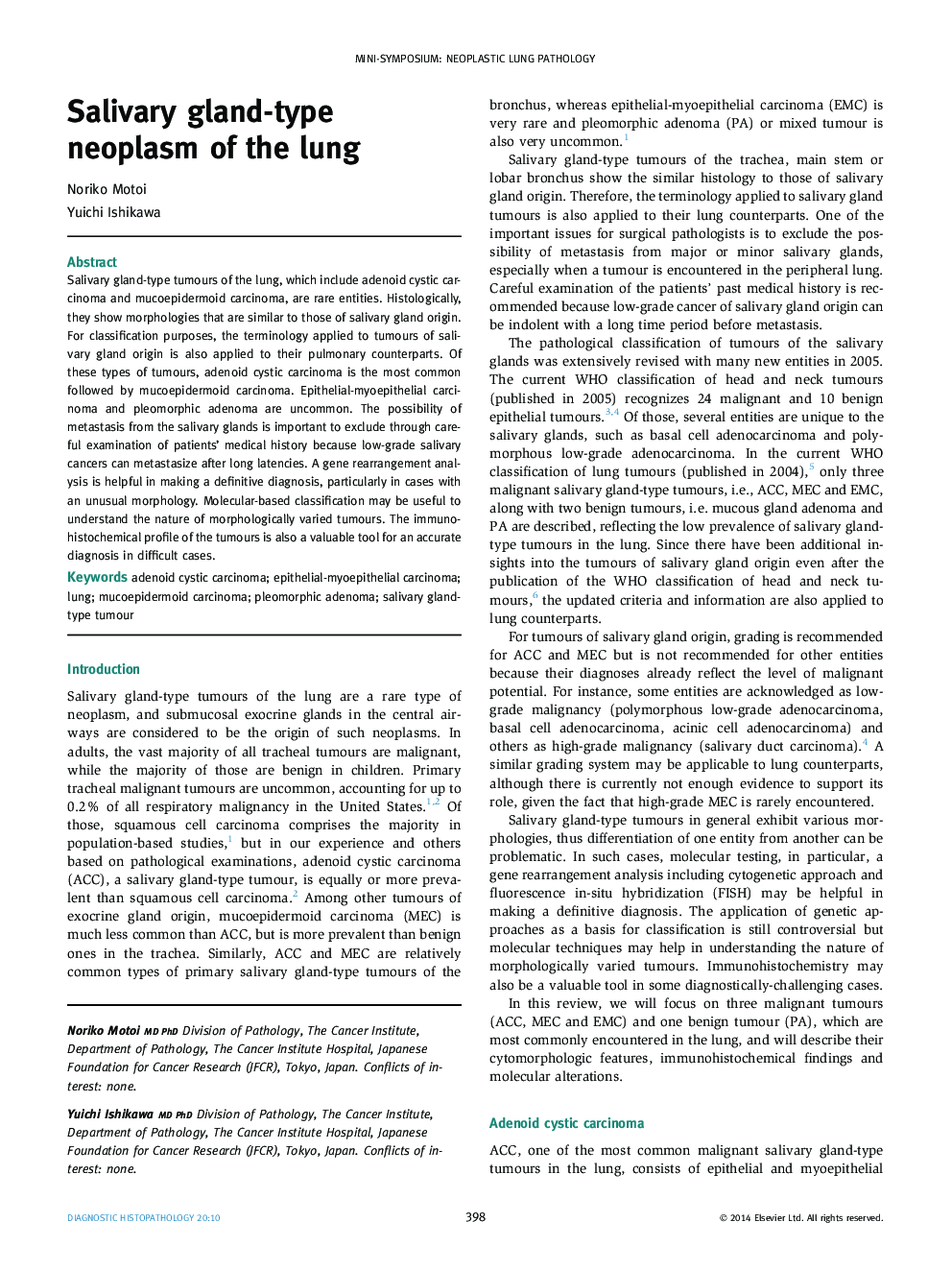| Article ID | Journal | Published Year | Pages | File Type |
|---|---|---|---|---|
| 4131090 | Diagnostic Histopathology | 2014 | 7 Pages |
Salivary gland-type tumours of the lung, which include adenoid cystic carcinoma and mucoepidermoid carcinoma, are rare entities. Histologically, they show morphologies that are similar to those of salivary gland origin. For classification purposes, the terminology applied to tumours of salivary gland origin is also applied to their pulmonary counterparts. Of these types of tumours, adenoid cystic carcinoma is the most common followed by mucoepidermoid carcinoma. Epithelial-myoepithelial carcinoma and pleomorphic adenoma are uncommon. The possibility of metastasis from the salivary glands is important to exclude through careful examination of patients' medical history because low-grade salivary cancers can metastasize after long latencies. A gene rearrangement analysis is helpful in making a definitive diagnosis, particularly in cases with an unusual morphology. Molecular-based classification may be useful to understand the nature of morphologically varied tumours. The immunohistochemical profile of the tumours is also a valuable tool for an accurate diagnosis in difficult cases.
